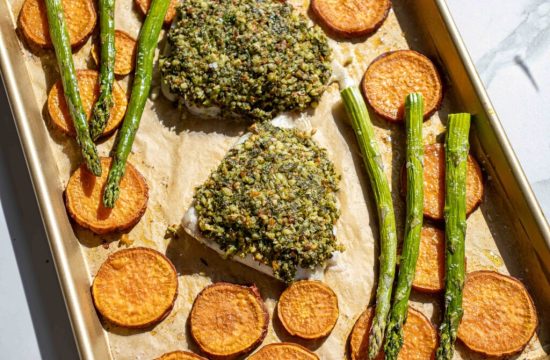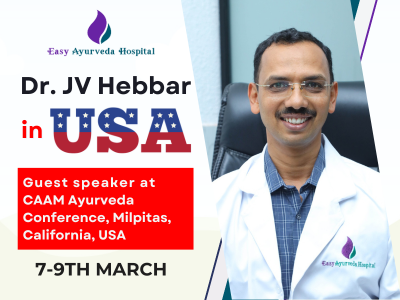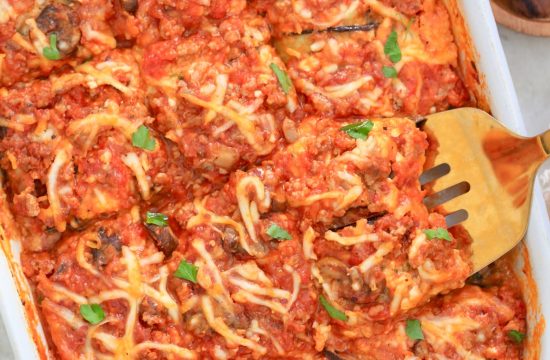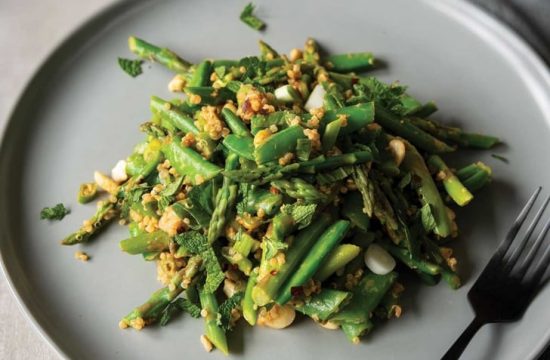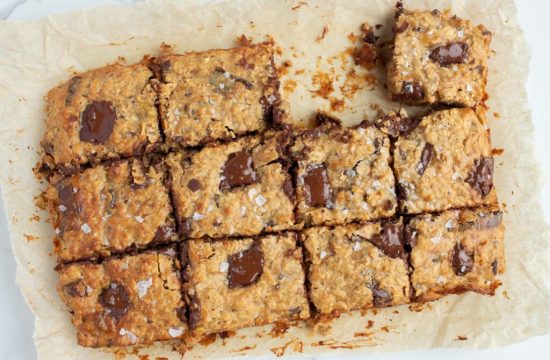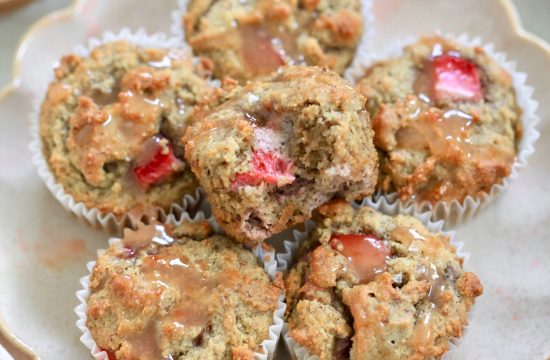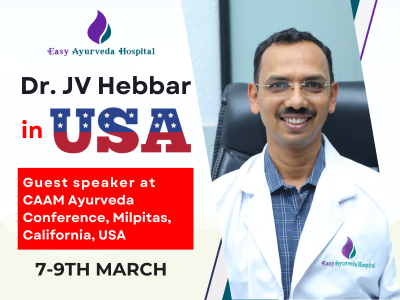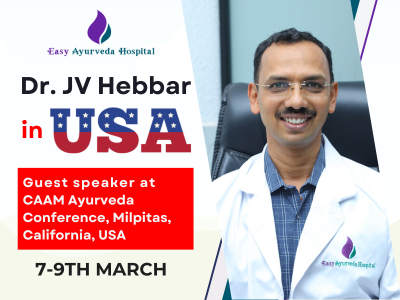Article by Dr Raghuram Y.S. MD (Ay) & Dr Manasa S, B.A.M.S
Neurodermatitis
Neurodermatitis is a skin problem in which the person suffering from the condition keeps scratching his or her skin all the time i.e. there is severe urge to itch.
The lesions / patches of neurodermatitis appear dry, thick, scaly, leathery, red, brown, yellow, grey or purple in colour and scarring with progression of lesion. Though exact causes are not known, irritants like tight clothing or insect bites, scratching can act like triggers. It also coexists with dry skin, atopic dermatitis or psoriasis.
Symptoms include pruritic and desquamate skin lesions, erosions, hyperkeratosis and induration, altered pigmentation, erythematous plaques, lichensification and hyperpigmentation.
In this article we will try to understand neurodermatitis from an Ayurveda perspective.
Related Reading – Neurodermatitis
Neurodermatitis: Ayurveda Understanding
There is no one particular condition explained in Ayurveda texts which can be exactly correlated with neurodermatitis. Here we will try to understand certain conditions explained in the context of Kushta – skin disorders in correlation with neurodermatitis. We will also understand neurodermatitis by looking at the condition and its symptoms from a dosha perspective. We can also see that neurodermatitis is also not a single condition, it can be associated with many skin ailments.
Kandu – Neurodermatitis is marked by ‘itching of the skin’ and can happen in many areas of the body. The main symptom of neurodermatitis is ‘repeated itching’. The patient approaches the physician to get ‘remedy for itching’. Therefore, neurodermatitis can be simply considered as ‘Kandu’ (Ayurvedic name for itching) and also treated on the lines of ‘kandu chikitsa’ without falling into complexities of diagnosing the given condition. There are many conditions wherein kandu is a main symptom. When general management of kandu including medicines, therapies and diet are administered, itching in all these conditions will be relieved. So, in this condition, we are treating the ‘chief complaint or symptom’ of the disease, kandu in this context, immaterial of the disease in which it manifests. This is exactly why the patient has approached the physician.
Vata link & Vataja Kushta – Neurodermatitis is said to be associated with dry skin, atopic dermatitis or psoriasis. In all these conditions, dryness is common. Dryness is caused by vata vitiation or skin vitiated by aggravated vata. So, Vataja Kushta – skin disorders caused by aggravated vata can cause a condition resembling neuro-dermatitis. All types of kushta having vata predominance may have most symptoms like those of neurodermatitis. We can see that stress and anxiety can also provoke itching symptoms. Stress and anxiety can also aggravate vata.
The subtypes of kushtas wherein there is vata predominance present with clinical picture of neurodermatitis. They are as below mentioned –
– Eka Kushta
– Charma / Charmakhya Kushta / Hasti Charma Kushta
– Kitibha Kushta
– Vaipadika Kushta
– Vicharchika Kushta
– Mandala Kushta
Eka Kushta – Dry, thick, scaly and leathery skin is a marking feature of neurodermatitis. We can see this pattern in eka kushta which is a kshudra kushta – minor skin disease. It is marked with large patches and resembles the skin of a fish and there is absence of sweating. Since there is no sweating, the skin gets dry and kleda – unnecessary fluid is held back in the body. This condition is also caused by combined aggravation of vata and kapha, wherein here vata dries up the kapha and hence there is itching also, though not specified amongst the symptoms of eka kushta.
Charma / Charmakhya / Hasti Charma
The skin gets thicker along with change of colour in itchy spots of neurodermatitis. Such a condition is found in Hasti Charma, a type of Kshudra Kushta – minor skin diseases. The advanced stage or manifestation of neurodermatitis can be considered as hasti charma. Hasti charma is one among the eleven types of kshudra kushta – minor skin diseases. The patches are thick and devoid of layers. This condition is also caused by joint vitiation of vata and kapha.
Kitibha Kushta – This is also a type of kshudra kushta which presents with black and brown lesions / patches which would feel like a wound scar on touch – kina khara Sparsha. The patches are dry and hard, as explained in neurodermatitis. This condition is often correlated with psoriasis, with which neurodermatitis is often associated. This condition is also caused by combined aggravation of vata and kapha.
Vaipadika Kushta – This is yet another vata-kapha type of skin disorder belonging to the kshudra kushta category. In this condition there are painful cracks in palms and soles. Neurodermatitis is not limited to palms and soles, but it can occur in these regions too. Continuous scratching on already present cracks and fissures on the skin of feet and hands can lead to patches resembling neurodermatitis.
Vicharchika Kushta – It is a kshudra kushta caused due to predominant aggravation of kapha. It presents with multiple itchy boils or eruptions / blisters of blackish brown colour along with severe itching sensation and oozing (exudation). Severe itching and discoloration as found in vicharchika is also found in neurodermatitis.
Mandala Kushta – It is a Maha Kushta – greater skin disease caused by predominant aggravation of kapha which resembles neurodermatitis in its presentation. The patches or lesions in this condition are in the form of circular raised patch / patches which are white or red in colour, stiff, unmovable, elevated, circular and mingled with one another. The patient experiences heaviness around the affected patch. It is said that the older patches of neurodermatitis exhibit whitening or paleness surrounded by darker hues, which resembles a clinical picture of mandala kushta.
Depending on the different colours that are manifested in the patches of neurodermatitis, many other kinds of kushta – skin diseases presenting with these various colours and kshudra rogas – minor diseases which also present with these colours and other symptoms of neurodermatitis can be considered in the comparison and correlation.
Can predominant aggravation of kapha cause neurodermatitis?
Itching according to Ayurveda, by default, is associated with kapha. Kapha is the main dosha responsible for all kinds of itching. Pathological increase of kapha would cause itching. Kapha is unctuous and liquid in nature. So, when kapha abnormally builds up in the body undoubtedly there will be itching, but the skin will also appear unctuous and there may be exudates. But these are not the features of neurodermatitis. On the other hand, vata-kapha involvement can cause conditions similar to neurodermatitis. This can happen only when the dryness of vata in the vata-kapha disorder becomes dominant over the wetness and unctuousness of kapha and dries it up.
Based on the appearance of ‘neuro dermatitis’ lesion
By appearance, neurodermatitis is considerably large in size. It is also dry, thick, scaly and leathery. These features are found in eka kushta and kitibha types of kushta, both of them fall into the category of kshudra kushta i.e. minor skin diseases.
Based on the symptoms of neurodermatitis
| Sl No | Symptom of Neurodermatitis | Dosha involvement |
| 1 | Pruritic skin lesions | Vata, Kapha or Vata-Kapha |
| 2 | Desquamative skin lesions | Vata |
| 3 | Erosions with hemorrhagic tendencies | Vata, Vata-rakta |
| 4 | Hyperkeratotic skin | Vata |
| 5 | Induration of epidermis | Vata, Vata-Kapha |
| 6 | Altered pigmentation / hyperpigmentation | Vata, Pitta |
| 7 | Atrophic changes | Vata |
| 8 | Erythematous plaques | Vata, Vata-Kapha |
| 9 | Excoriation | Vata |
| 10 | Nocturnal itching | Vata |
| 11 | Skin pain | Vata |
Here we can see that vata is predominant in almost all doshas. Pittingn it the other way, vata aggravation causes the predominant symptoms of neurodermatitis.
Ayurveda Treatment of Neurodermatitis
Nidana Parivarjana
Keeping away from the causative factors and triggers of the disease is the key strategy to avoid the disease, its progression or recurrence. Among these, vata or kapha aggravating factors and all etiological factors enlisted as causal of kushta should be kept away.
Dosha Pratyanika Chikitsa
Dosha aggravation and dosha predominance in neurodermatitis should be analysed properly and addressed accordingly.
Vyadhi Pratyanika Chikitsa
Addressing the root cause of the disease should be the main approach in dealing with neurodermatitis and that root cause might be a disease presenting with symptoms similar to neurodermatitis i.e. the types of kushta which have been mentioned above. Any other disease presenting with a skin condition which appears closer to neurodermatitis should be treated. When the main disease is treated comprehensively, the disease which has branched out from it, neurodermatitis in this case, will also be addressed. Basically, kushta chikitsa i.e. treatment line of kushta should be followed in terms of implementing panchakarma measures, medicines, lifestyle changes and diet which would address the disease from its roots.
Panchakarma measures
Virechana is the best remedy in cases of neurodermatitis. The Sneha – unctuous substances given before administration of virechana as a part of preparatory procedure, should be selected from the context of kushta chikitsa. If only virechana is to be given as a regular / daily detox, the medicine should be in an oil or ghee form, prepared with medicines / herbs which are remedies for kushta and are antagonistic to the causal dosha / doshas.
External therapies
Since vata is predominant dosha causing neurodermatitis and symptoms therein, it is very important to keep the skin unctuous and not allow it to dry. For this, oil therapies should be done frequently. Taila Dhara – showering of herbal oils and also application of medicated oils on the afflicted part / parts of the skin in neurodermatitis are ideal interventions. Udwarthana with herbal powders mixed in oils shall be used as and when needed as scrubs to remove dead tissues and skin debris.
Milk prepared with Nalpamaradi Kashayam should be used for showering over the neurodermatitis patches.
Effective formulations
Below mentioned are some of the important and effective formulations in the treatment of neurodermatitis –
– Tiktaka Kashayam / Ghrta
– Mahatiktaka Kashayam / Ghrta
– Guggulutiktaka Kashayam / Ghrta
– Aragwadhadi Kashayam / Ghrta
– Gandharvahastadi Kashayam
– Gandharvahastadi Eranda Tailam
– Nimbamritadi Eranda Tailam
– Ksheerabala Tailam / Ksheerabala Tailam 101
– Trivrit Leham
– Madhusnuhi Rasayanam
– Nalpamaradi Tailam – external
– Shatadhauta Ghrtam – external





